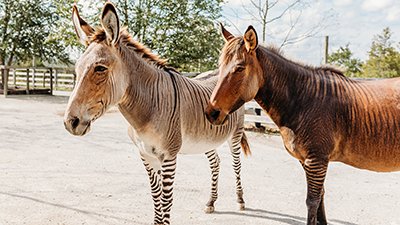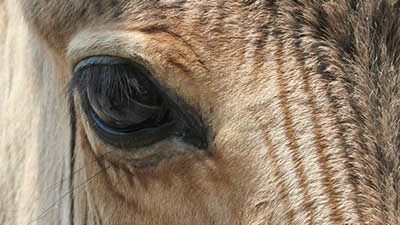Toads Voluntarily Hybridize
BBC News: “Toads Are ‘Open-minded’ about Sex” Research published in the journal Science details how some female toads violate an “evolutionary rule.” Perhaps no one has told them about it!
The University of North Carolina’s Karen Pfenning discovered that under certain conditions, female spadefoot toads will voluntarily breed with the males of other species rather than staying with their own.
More specifically, Pfenning learned that female spadefoots (S. bombifrons), which live in small ponds, will mate with the closely related D. multiplicata toad even when S. bombifrons males are available. The behavior takes places when ponds become shallow.
Why the “betrayal”? A small pond is at risk for drying out completely, which would kill any tadpoles growing inside of it. S. bombifrons tadpoles develop more slowly than those of D. multiplicata, and the longer development period raises the risk that they will be left high and dry, so to speak, by falling water levels.
This news ... highlights the problem with the definition of species.
The hybrid tadpoles produced by a female S. bombifrons and a male D. multiplicata, however, take after their father, developing rapidly. There is therefore less risk that the pond will dry out during their development.
This news may seem interesting only as a biological oddity. In actuality, it highlights the problem with the definition of species.
The problem is there are numerous examples of “hybrid” offspring that result from a member of one species breeding with a member of another species. Sometimes the interbreeding even transcends the genus level, such as in the cases of the wholphin (whale + dolphin), liger (lion + tiger), and zebrula (horse + zebra).
Intriguing combinations that they are, such hybrids—including, even, the lowly S. bombifrons + D. multiplicata hybrid—remind us of the original created kinds. Broader than current species and many genera, the original created kinds have since speciated through natural selection and mutations into the vast diversity of life we see today. Along the way, they have lost genetic information, which means that some can no longer breed with other members of their own original kind.
Understanding the concept of “kinds” is crucial to grasping other aspects of creation history. For example, understanding how many animals Noah had to bring with him on the Noah’s Ark hinges on understanding that he did not need to bring two (or more) of each modern-day species; he only needed to bring two (or more) representatives of each original kind. Similarly, when Adam named the animals, he did not have to watch as millions of species of every life-form paraded before him; he only needed to watch and name representatives of the original created kinds.
For a terrific introductory overview of why creationists identify kinds rather than simply species, read “‘Species’ and ‘kind’” from chapter two of Gary Parker’s book Creation: Facts of Life.
For more information:
Remember, if you see a news story that might merit some attention, let us know about it! (Note: if the story originates from the Associated Press, Fox News, MSNBC, the New York Times, or another major national media outlet, we will most likely have already heard about it.) And thanks to all of our readers who have submitted great news tips to us.
(Please note that links will take you directly to the source. Answers in Genesis is not responsible for content on the websites to which we refer. For more information, please see our Privacy Policy.)

Answers in Genesis is an apologetics ministry, dedicated to helping Christians defend their faith and proclaim the good news of Jesus Christ.
- Customer Service 800.778.3390
- Available Monday–Friday | 9 AM–5 PM ET
- © 2025 Answers in Genesis



